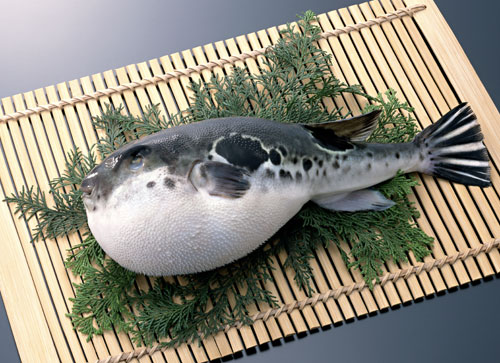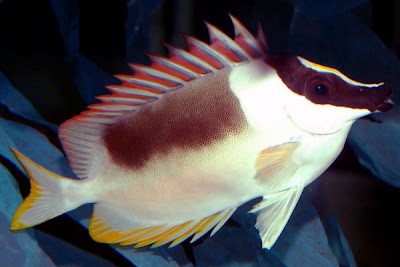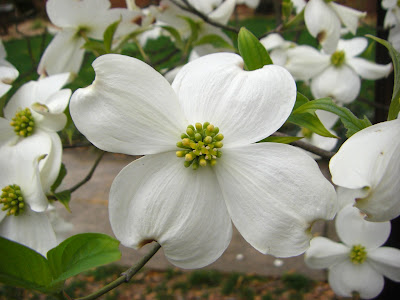 |
| What are the world's most poisonous fish? |
Sharks apart, the majority of fish species that can be a danger to humans are neither particularly aggressive or see humans as a potential meal. However, they can still be dangerous , even deadly, but for an altogether different reason. They are either venomous, and in the majority of cases sting when stepped on or manipulated, or they are are potentially dangerous when eaten - such as the infamous fugu.
That being said, below is a list of potentially deadly fish that you really should be aware of if you intend putting your foot anywhere near the sea - and not just the tropics!
Stingray (family Dasyatidae)
 |
| The Stingray |
Clearly the clue is in the name. Stingrays inhabit shallow water, especially in the tropics but can be found in temperate regions as well.
The different species have a distinctive ray shape but their colouration often makes them hard to spot unless they are swimming.
Stingrays defend themselves by lashing out with whip-like tails equipped with one or two spines.
Because the spines are barbed they can cause serious gashes; besides, they are venomous in about two-thirds of species. The spines are capable of penetrating wet-suits and shoe leather and have been known to cause serious injury, and even to kill people unlucky enough to have been stabbed in the chest (like the famous herpetologist, Steve Irwin).
Stingrays pose a risk mainly to people wading, who often get injured on the leg, as well as to careless fishers and divers who sometimes get lashed by a startled stingray as they swim above it. Prevention involves shuffling feet when wading.
Wounds should be washed thoroughly with seawater and the spines removed carefully.
Scorpion fish or Zebrafish (family Scorpaenidae)
 |
| Lionfish |
Scorpion fish are mostly marine fish that live mainly in the reefs in the Pacific and Indian oceans.
The hundreds of species can measure anything between 30 and 90 cm (1-3 feet), are usually reddish in colouration and have long wavy fins and spines.
They inflict an intensely painful sting and include many of the world's most venomous species such as the Lionfish, or Turkey fish, Dragon fish, Scorpion fish, Fire fish, Firefish, Butterfly cod (family Scorpaenidae).
A Lionfish is any of several species of venomous marine fish in the genera Pterois, Parapterois, Brachypterois or Dendrochirus.
Most lionfish inhabit the tropical Indo-Pacific region of the world, though some species can be found worldwide. Recently, lionfish have even been spotted in the warmer coral regions of the eastern Atlantic Ocean around the Azores and extending into the Mediterranean Sea, as well as in the Caribbean Sea.
 |
| Lionfish sting |
This introduction could be the result of the destruction of an aquarium in southern Florida, by Hurricane Andrew.
Lionfish are coloured differently (red, green, red, navy green, brown, orange, yellow, black, maroon or white) but with a distinctive striped appearance with extremely long and separated spines.
Like in the stonefish, the dorsal spines are highly venomous and divers and fishers should avoid any contact with these fish.
Fortunately, lionfish are not aggressive towards humans and prefer to keep their distance, when they are given a choice. Spines are used for defence only when the threatened fish faces its attacker in an upside down posture to expose them.
For humans, stings are extremely painful and can cause headaches, vomiting and breathing difficulties; however, they are normally not deadly. Medical treatment is still advised, though, as it is difficult to tell how badly a person will react to the venom. A common treatment consists of soaking the stung area in hot water.
Rabbitfish, or Spinefoot, Chimaera, Siganus fish (family Siganidae, order Perciformes)
 |
| Rabbitfish |
Rabbitfish are found predominantly on the reefs and shallow lagoons in the Pacific and Indian oceans, as well as in the eastern Mediterranean.
They are active during the day, some species being solitary, others living in schools.
They average about 30 centimetres long (though some measure hardly 10 cm) and have small rabbit-like mouths, large dark eyes, generally bright colours or a complex pattern, and very sharp spines in their fins.
The spines are venomous and can inflict intense pain.
These herbivorous fish, though, have a shy temperament (hence their name) and will only use their spines in defence. Their poison is not life-threatening to adult humans, but is likely to cause severe pain.
Weever fish, or Weaverfish (family Trachinidae, order Perciformes)
 |
| Weever fish |
The eight species of weever fish are found mostly in tropical waters, though the lesser weever (responsible for most human stings) has a wide distribution: from the southern North Sea to the Mediterranean; it is especially common around the south coast of the United Kingdom and Ireland, the Atlantic coast of France and Spain, and the northern coast of the Mediterranean.
These fairly slim fish are mainly brownish and measure about 30 cm. All their fins have venomous spines that cause a very painful wound.
During the day, weevers bury themselves in sand, usually in shallow waters (especially in the case of the lesser weever), sometimes little more than damp sand, just showing their eyes, and snatch prey (small fish and shrimps) as it comes past.
 |
| Weever fish sting |
The vast majority of injuries occur to the foot when victims accidentally step on a buried fish; stings are also commonly located on the hands and buttocks.
Stings are most common in the hours before and after low tide, so one possible precaution is to avoid bathing or paddling at these times. It is also recommended to wear sandals or wetsuit boots with a relatively hard sole (stings can penetrate wetsuit rubber soles), and to avoid sitting or "rolling" in the shallows.
Stings are extremely painful and cause a throbbing pain and swelling in the affected area, sometimes accompanied by a numbness, nausea, joint aches, headaches, abdominal cramps, lightheadedness ad urination and tremors. In rare cases, victims had more severe symptoms, such as abnormal heart rhythms, shortness of breath, weakness, seizures, decreased blood pressure, unconsciousness, and tissue degeneration.
Stonefish (family Synanceia)
 |
| Stonefish |
Stonefish occur in the tropical waters of the Pacific and Indian oceans. These 30 cm-long (1 foot) fish are extremely well camouflaged as the lie on seabed, trying to ambush shrimps and small fish, looking exactly like an encrusted rock. They can be found from exposed sand and mud in tidal inlets to depths of 40m.
Their cryptic colouration and hunting technique make the Stonefish especially dangerous to humans. Indeed, to protect itself against bottom-feeding sharks and rays, these fish have developed 13 defensive spines along their backs. When stepped on, the pressure on the spines causes the sheath under them to shoot venom from their attached glands deep into the wound (It then takes a few weeks for the glands to regenerate and recharge.)
The pain is excruciating and can last for hours. It can be accompanied by temporary paralysis, shock and sometimes even death.
To avoid being stung, turn over rocks with caution and mostly wear thick-soled shoes and tread gently - spines may penetrate soles if a stonefish is jumped on.
Catfish (order Siluriformes)
 |
| Striped eel catfish |
Catfish are a diverse group of bony fish. Named for their prominent barbels (though some species don't have any), which resemble a cat's whiskers, catfish range in size from the heaviest, the Mekong giant catfish from Southeast Asia and the longest, the wels catfish of Eurasia, to the tiny candiru (Vandellia cirrhosa) a parasitic species.
Catfish species live in inland or coastal waters of every continent except Antarctica, but are particularly common and diverse in tropical South America, and to a lesser degree in Africa and Asia.
Catfish (with the exception of the electric catfish (Malapteruridae), when interfered with, produce three barbed spines which stick out at right angles from the back and side fins and can discharge a potent venom and inflict severe wounds
(the whisker-like sense organs around their mouths are harmless).
Stings from all these fish are painful and can lead to collapse and even death (especially with the striped eel catfish -
Plotosus lineatus) in exceptional circumstances. The venom in the spines remains active for days, so discarded spines and even refrigerated specimens should be treated with caution.
Toadfish (family Batrachoididae, order Batrachoidiformes)
 |
| Toadfish |
Toadfish are found in the tropical waters off the coasts of South and Central America. Most species are marine, but species in the Thalassophryne family, especially, occur in brackish water and even in freshwater habitats.
Toadfish measure between 17.5 and 25 cm (roughly 2/3 foot), have a dull coloration and a large mouth.
Their English and scientific names come from their toad like appearance. They also share with toad an ability to "sing", using their swim bladder as a sound-production device used to attract mates.
Toadfish bury themselves in the sand to ambush their prey and may be easily stepped on. They all have very sharp spines on the dorsal fin, and in the subfamily Thalassophryne, these are hollow and connect to venom glands capable of delivering a painful wound to predators, and unwary waders.
Click here for related articles:
ARE JELLYFISH FISH?
DO FISH SLEEP
HOW LONG CAN A FLYING FISH FLY FOR?
THE WORLD'S UGLIEST FISH
WHAT IS THE WORLD'S MOST POISONOUS FISH?
WHAT IS THE BIGGEST FISH IN THE WORLD?
















.jpg)





















